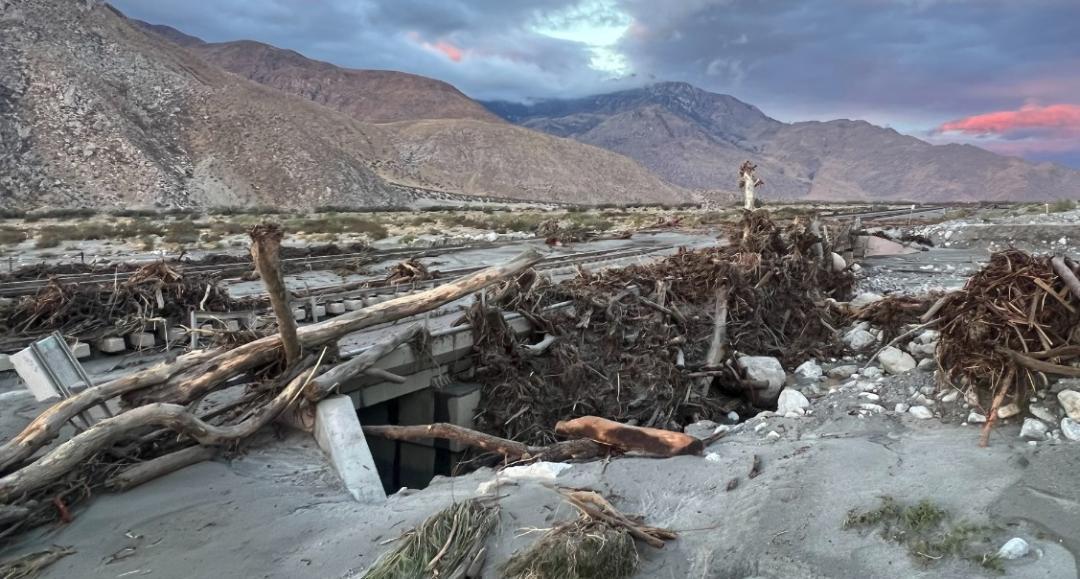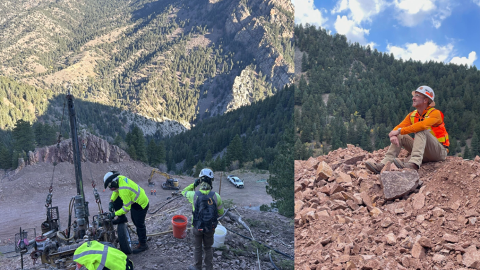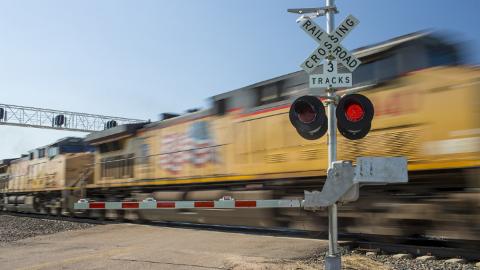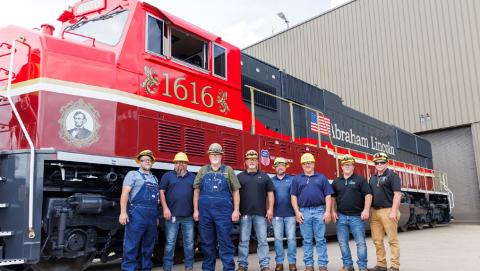When the first tropical storm in 60 years hit the West Coast last month, Union Pacific was preparing its emergency response long before the torrential rains damaged 14 miles of track into the Los Angeles basin.
In the days before the storm hit, the railroad had already begun staging equipment, raw material, and personnel in anticipation of the storm’s impact, which left three feet of mud on the track. It was one of the reasons Union Pacific was able to repair and return a route to service within just two days and rebuild a bridge in seven days, restoring both lines and full service in a week.
“As we face more extreme weather across our 32,000-mile network, a multitude of Union Pacific teams from Engineering to Network Planning/Operations are working together to proactively protect our network and prepare an effective and safe response, including staging equipment and resources in advance,” said Tiffanie Russell, senior director of Operations Support for Union Pacific’s Harriman Dispatching Center.
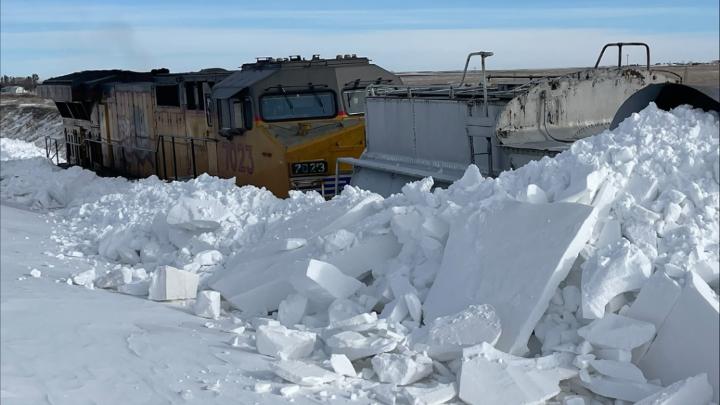
Clearing heavy snowfall near Albin, Wyoming — December, 2022
The timeliness of the railroad’s response to Tropical Storm Hilary underscores the work done behind the scenes and on the frontlines by railroaders to prepare, anticipate and effectively respond to all kinds of extreme weather, including record-breaking snowfalls and scorching heatwaves.
Union Pacific along with others across North America have seen a growing impact of extreme weather on its operations, which can affect the entire supply chain. The railroad prepares and plans for extreme weather in several ways, including using weather data to identify patterns and the impacts of storms on our network. Union Pacific also performs an in-depth review of historical storms and the impact they had on our network to anticipate future needs.
The advance weather warnings allow the railroad to mobilize equipment and personnel in advance, ensuring the railroad is ready before extreme weather hits.
In addition, Union Pacific has specialized crews strategically placed to prepare and respond to extreme weather. For example, the railroad’s Sierra Snow Fighters utilized specialized heavy equipment this year to manage one of the snowiest winters in recent memory, including 62-feet of snow at Donner Pass in the Sierra Nevada Mountains.
“Despite facing extreme conditions this year, our teams stepped up and effectively managed conditions on the ground to provide the service that our customers expect and need. I couldn’t be prouder of their efforts and their tenacity in getting the job done under incredibly challenging conditions,” said Shane Keller, senior vice president – Operations.
While staging equipment and resources is one critical component of preparedness, Union Pacific also must be agile and make real-time adjustments. This summer, due to triple-digit temperatures across the Southwest, Union Pacific saw an increase in heat restrictions placed on our network as a precaution to reduce the impact of train traffic on the rail. Despite the restrictions, Union Pacific did not experience a significant impact on its operations.
Subscribe to Inside Track
As part of our 2022 Climate Action Plan, Union Pacific conducted an extensive climate scenario analysis to better understand the risks to and opportunities for our operations, infrastructure and supply chains from specific climate scenarios. The analysis is being used to evaluate and develop strategies to allow us to respond to both high- and low-carbon scenarios.
While disruptions caused by extreme weather may be beyond Union Pacific’s control, we are taking thoughtful, deliberate steps to reduce our environmental impact and help our partners do the same. In 2021, we announced our science-based target to reduce absolute Scope 1 and 2 greenhouse gas (GHG) emissions, as well as GHG emissions on a well-to-wheel basis from locomotive operations 26% by 2030 from a 2018 base year.

